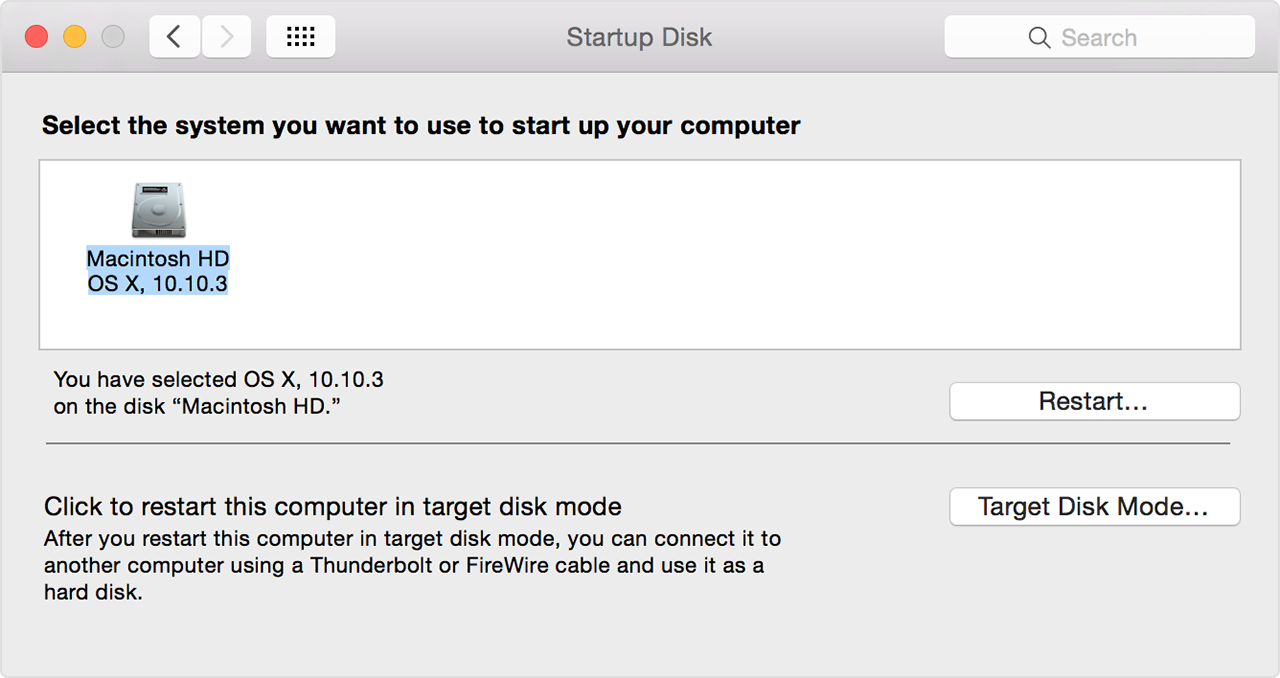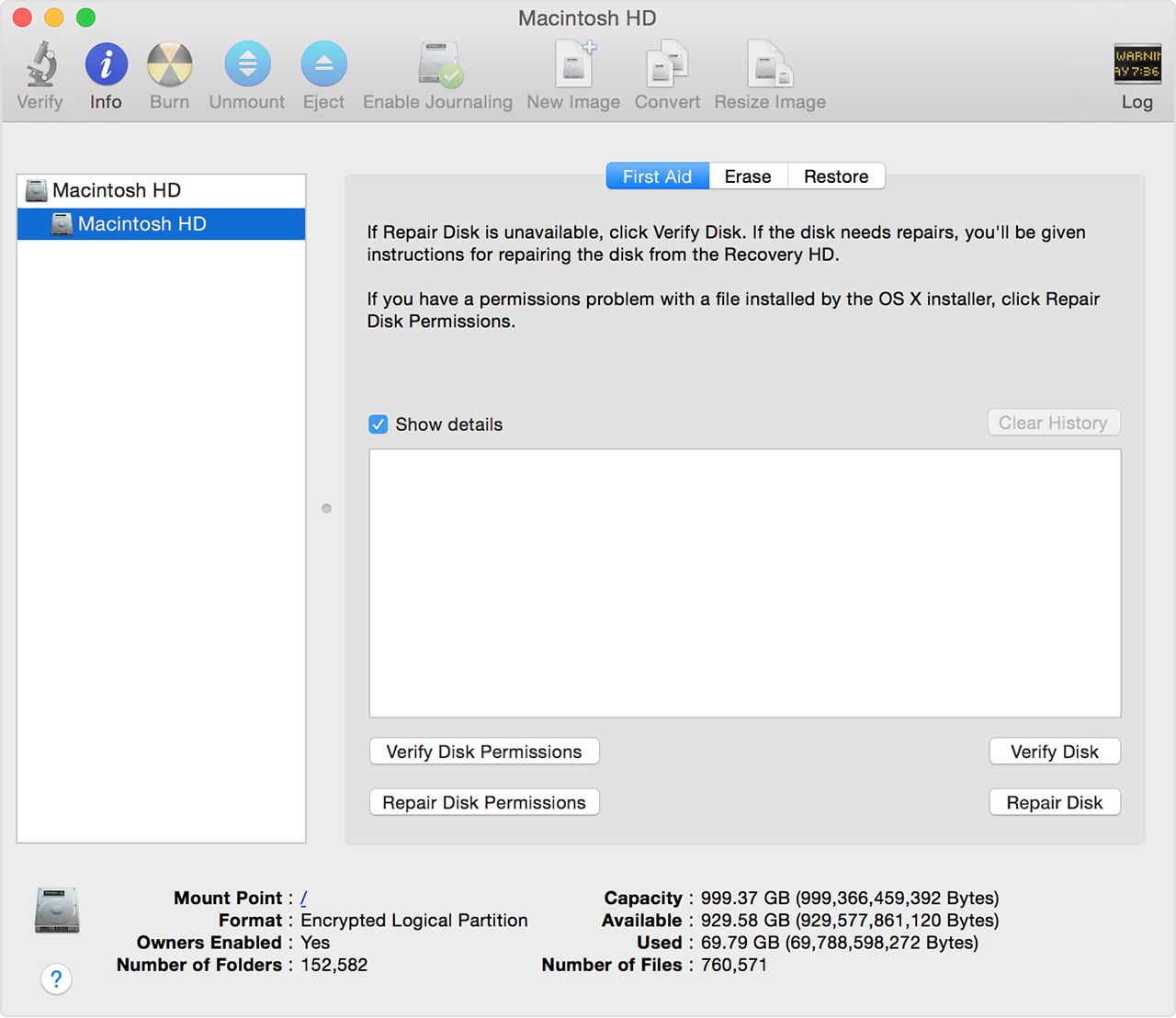The dock? I think you misunderstand... there is no dock. The OS doesn't load. When the macbook is turned on, it goes right to a white screen which has a file folder icon flashing with a question mark.
Thanks
If a flashing question mark appears when you start your Mac
If you see a flashing question mark on your Mac's screen at startup, it means your Mac can't find its system software.
If the question mark appears for only a few seconds
If your Mac displays a flashing question mark for a few moments but then continues to start up, you might need to reselect your startup disk in System Preferences.
- Choose System Preferences from the Apple menu.
- Click the Startup Disk icon in the System Preferences window.
- Click the icon of the volume you normally use to start up your computer (usually named "Macintosh HD").
- Close the System Preferences window.
Your Mac should now start up without the flashing question mark.
If your Mac doesn't start up
If your Mac starts up to a flashing question mark but then doesn't continue starting up, try these steps.
- Turn off your Mac by pressing and holding the power button for a few seconds.
- Press the power button once to turn your Mac back on. When you hear the startup sound, immediately press and hold the Command and R keys on your keyboard to start your Mac from OS X Recovery. Keep these two keys held down until you see an Apple logo or globe appear.
- If prompted, select a Wi-Fi network to connect to the Internet as part of startup.
- After the Recovery screen appears, click the Apple menu and choose Startup Disk.
- Select your startup disk, then click Restart.
If you don't see your startup disk listed in the Startup Disk window, close the window and try the next sections of this article.
If you don't see your startup disk
If you don't see your startup disk in the Startup Disk window, use these steps to see if your startup disk needs directory repair.
- Open Disk Utility from the Recovery window.
- In the Disk Utility window, select your startup disk (usually named "Macintosh HD") from the left side of the window.
- Click the First Aid tab.
- Click the Repair Disk button to verify and repair any issues with your startup disk.
- After your disk is successfully repaired, quit Disk Utility.
- Click the Apple menu and choose Startup Disk. Select your startup disk, then click Restart. If you still don't see your Startup Disk, try reinstalling OS X on your startup disk.
If you don't see your built-in startup disk in the Disk Utility window, or if Disk Utility indicates there's a hardware issue, your Mac might need repair. Make an appointment with an Apple Genius or an Apple Authorized Service Provider for more help.
If Disk Utility can't repair your startup disk
If Disk Utility finds issues with your startup disk that it can't repair, you might need to reformat it. You should back up any important data on your startup disk before erasing it. Erasing your startup disk deletes everything stored on it, including items in your home folder like your documents and items on your desktop.
Back up your data
If you don't have a
recent backup of personal data that's stored on your startup disk, use these steps to try to back up your data.
- Connect an external USB, Thunderbolt or FireWire drive to your Mac. The drive needs to be the same size or larger than your current startup disk. It also needs to be a drive that you can erase.
- Use OS X Recovery to erase the external drive, then install OS X onto the external drive. Make sure that you select the external disk as the one you want to erase. Don't select your built-in startup disk (usually named "Macintosh HD").
- After installation is finished, your Mac automatically restarts from the external drive. When Setup Assistant appears, select the option to migrate your data from another disk. Choose your built-in startup disk as the source to migrate your data from.
- When migration is done, complete Setup Assistant. After the desktop appears, confirm your data is present on the external drive.
Reformat your built-in startup disk
After you back up your important data, use OS X Recovery to
erase your built-in startup disk and reinstall OS X. Make sure you select the built-in startup disk as the one you want to erase. When installation is finished, your Mac automatically restarts from your built-in startup disk.
If you're unable to erase your startup disk or reinstall OS X, your Mac might need repair. Make an appointment with an Apple Genius or an Apple Authorized Service Provider for more help.
Restore your data
After you erase your startup disk and reinstall OS X, your Mac automatically restarts and Setup Assistant appears. To copy your personal data back to your startup disk, select the option in Setup Assistant to migrate your data from an existing Time Machine backup or another disk. Choose the external drive as the source to migrate your data from and complete Setup Assistant.


